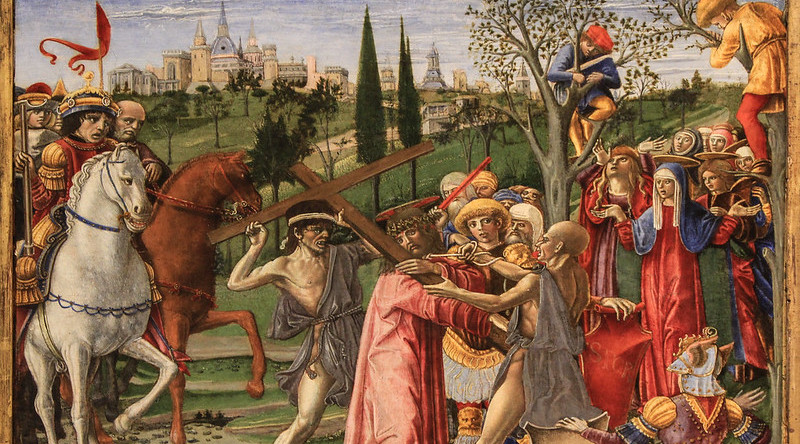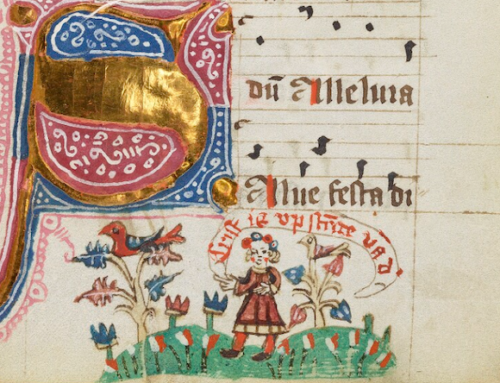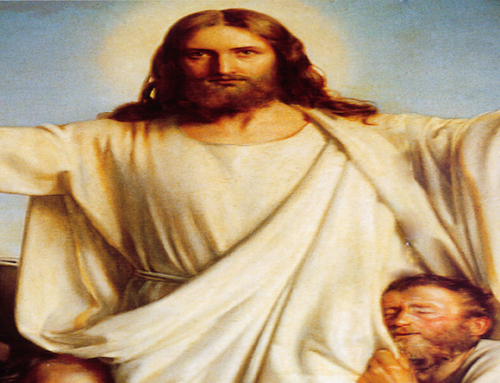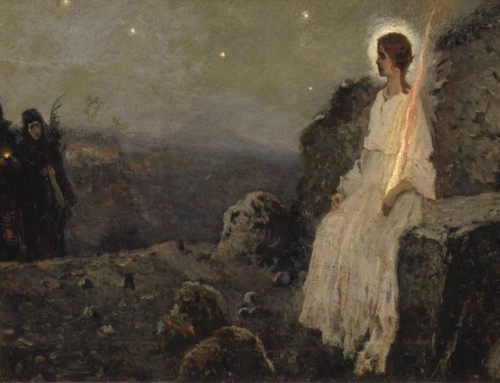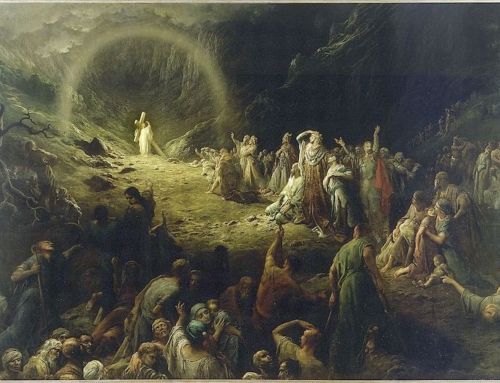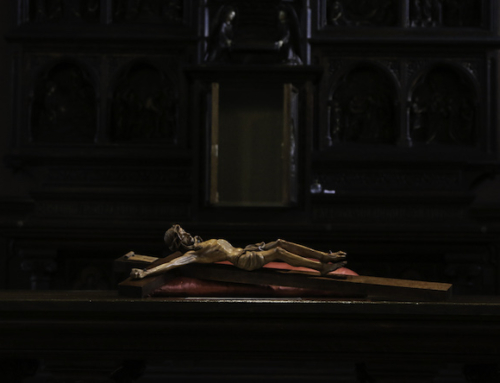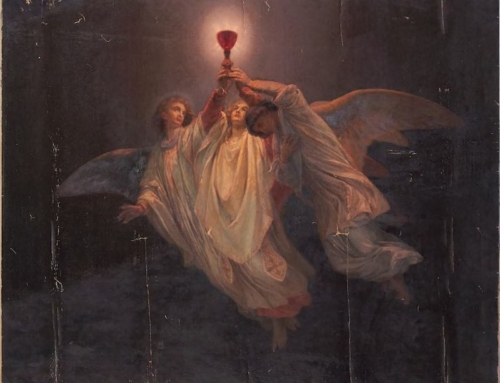Wood is an unforgiving substance. Think about the last time you stubbed your toe on that wooden door or chair or received a splinter from grabbing a loose board. But the hardness and stiffness of wood also makes it stable and permanent. A good piece of wood can be made into many things—including a cross.
The Church mourns the death of Jesus Christ on the cross. Christ’s humanity is put to death by the nailing of his human flesh to the bitter wood. It inflicts pain without remorse. It is the means by which Christ breathes his last breath.
Yet Trinitarian love transcends the pain and stiffness of the cross. It pours forth onto the world in the form of blood and water from Christ’s body: “But when they came to Jesus and saw that he was already dead, they did not break his legs. But one of the soldiers pierced his side with a spear, and at once there came out blood and water” (Jn 19:33–34). From the rigid and painful wood flows Christ’s perfect act of charity—blood and water are the fruit which forever change man’s fate. Now, death is not the end. While we mourn on Good Friday, we know that Christ’s death is the means to victory over sin and punishment.
The cross leads to conversion and freedom from temptation and sin. The German Dominican John Tauler articulates this well in his Spiritual Conferences when he says,
Men who are beginners in the spiritual life, when they first turn away from the world, are hunted by temptations, just as the hart is hunted by hounds; in particular, they are hunted by their great and foul sins…The harder and more fiercely we are hunted, the more intense our thirst for God, and the more ardent our longing. It will happen sometimes that one of the hounds will overtake the hart and seize him by the belly with its teeth. The hart, unable to shake itself free of the hound, will drag it to a tree, dash it against the trunk, break its neck and so be free of it. This is what we ought to do… We should run with all haste to the tree of the Cross and Passion of our Lord Jesus Christ, and so break the neck of our hound, our temptation.
Tauler shows us that true conversion happens by clinging to the wood of the cross. The Crucifixion reminds us both of the frailty of human nature and man’s choice to take the life of his Savior. We see the capacity for human destruction in every image of the Crucifixion. We’re reminded of the brutal effects that sin has on human nature. We cry, “Not me Lord! I could never do that.” But the cross is a mirror into the soul of man—we won’t like what we see, but that doesn’t change who we are. The running from sin stops on the wood of the cross. Here, sin and mercy meet, and Christ’s love is outpoured for us. Real conversion begins in accepting this reality, and it’s at the cross that we rest with our Lord.
The wood of the Cross leads us to conversion and freedom when we cling to it with our whole self. The more we nail ourselves to it, the more we are animated by the blood and water which pour fourth from the side of Christ. This is the way of the Christian life. The road to love is paved by the wood of the cross. Nail me to the wood, my Lord. Give me the grace to persevere in this life so that I may see you in the next.
✠
Photo by Fr. Lawrence Lew, O.P. (used with permission)

